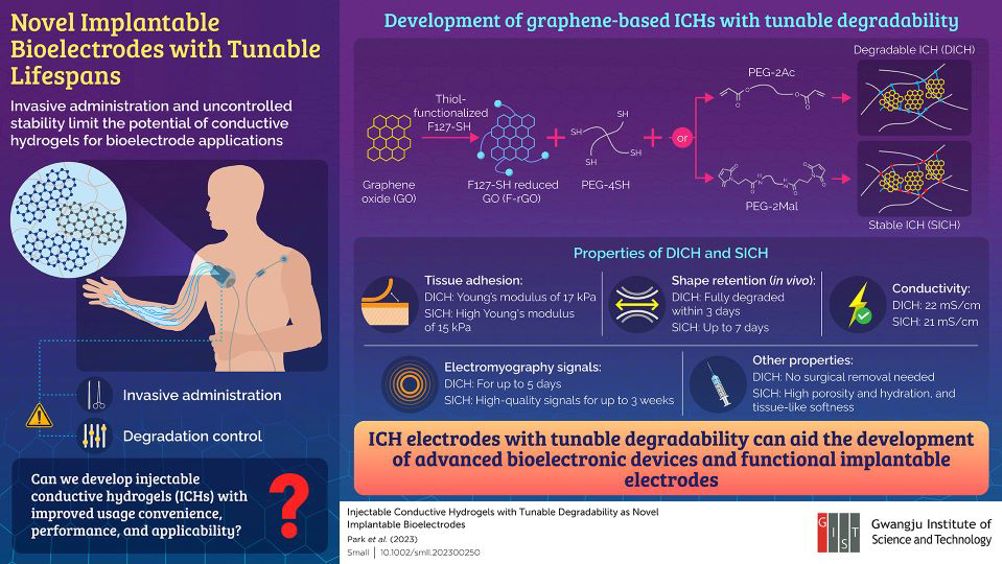Implantable bioelectrodes are electronic devices that can monitor or stimulate biological activity by transmitting signals to and from living biological systems. Such devices can be fabricated using various materials and techniques, and selection of the right material for performance and biocompatibility is crucial. To date, conventional metal-based bioelectrodes are associated with painful incision, tissue inflammation, inefficient signal transduction, and uncontrolled stability in living biological systems.
MORE FROM MEDICAL & HEALTHCARE
Conductible hydrogels have gained traction due to their flexibility, compatibility, and excellent interaction ability, but the absence of injectability and degradability has limited their convenience of use and performance in biological systems.
Now, a team led by Professor Jae Young Lee from the Gwangju Institute of Science and Technology (GIST) has developed graphene-based injectable conductive hydrogels (ICHs) that overcome these challenges. The team’s findings are detailed in Small.

In a statement, Prof Lee said: “Traditional implantable electrodes frequently cause several problems, such as large incision for implantation and uncontrolled stability in the body. In contrast, conductive hydrogel materials allow minimally invasive delivery and control over the bioelectrode’s functional in vivo lifespan and are thus highly desired.”
To synthesize the ICHs, the researchers used thiol-functionalised reduced graphene oxide (F-rGO) as the conductive component due to its large surface area and desirable electrical and mechanical properties. They selected dimaleimide (PEG-2Mal)- and diacrylate (PEG-2Ac)-functionalised polyethylene glycol as prepolymers to facilitate the development of ICHs that are stable and hydrolysable, respectively. These prepolymers were then subjected to thiol-ene reactions with poly (ethylene glycol)-tetrathiol (PEG-4SH) and F-rGO.
According to GIST, ICHs made with PEG-2Ac were degradable (DICH), while those with PEG-2Mal were stable (SICH). The researchers found that the novel ICHs outperformed existing ones by binding well to tissues and recording the highest signals. Under in vitro conditions, SICH did not degrade for a month, while DICH showed gradual degradation from day three onwards.
When implanted onto mouse skin, DICH disappeared after three days of administration, whereas SICH retained its shape for up to seven days. In addition to controlled degradability, both ICHs were skin-compatible.
Further, the team evaluated the ability of the ICHs to record in vivo electromyography signals in rat muscle and skin. Both SICH and DICH are said to have recorded high-quality signals and surpassed the performance of traditional metal electrodes.
The SICH recordings could be monitored up to three weeks, whereas DICH signals were completely lost after five days. These findings suggest the applicability of SICH electrodes for long-term signal monitoring and that of DICH for temporary use requiring no surgical removal.
“The novel graphene-based ICH electrodes developed by us incorporate features like high signal sensitivity, simplicity of use, minimal invasiveness, and tunable degradability,” said Prof Lee. “Altogether, these properties can assist in the development of advanced bioelectronics and functional implantable bioelectrodes for a variety of medical conditions, such as neuromuscular diseases and neurological disorders.”











Comment: New oil is a lose-lose for the offshore economy
The spill map from the <u>every day</u> link in the report looks to be roughly 400km × 400km @ say 100m average depth = 16,000 cubic <b>kilometres...